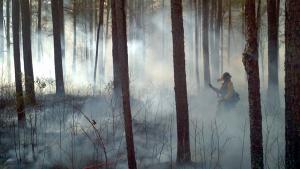
Template for Assessing Climate Change Impacts and Management Options (TACCIMO)
TACCIMO is a web-based information delivery tool that connects climate change science with forest management and planning needs. Science content in TACCIMO consists of quotations from peer-reviewed climate change literature and geospatial projections of future climate and resulting changes in ecosystems. U.S. Forest Service forest plan components are included to connect science with planning language.
TACCIMO's literature content helps users identify potential effects of climate change on key resource areas and provides corresponding management options to abate or adapt to future changes. TACCIMO sorts and filters a pre-selected set of quotations from peer-reviewed literature according to user selections. This is designed to help users to quickly scan through climate change research. TACCIMO also includes National Forest land and resource management plans from selected Forest Service Regions (R8, R9, and R5 [in development]) and presents the desired conditions, objectives, and design criteria from each plan.
Climate change literature and planning language can be viewed in a free exploration environment that allows for searching by keywords, or users can choose to generate reports based on simple step-by-step selections. User defined criteria for climate change literature and planning reports include selection of:
- Broadly defined factors (e.g., biodiversity, disturbance)
- Specific categories within chosen factors (e.g., freshwater ecosystems within biodiversity)
- Geographic region of interest (e.g., national, Forest Service Region)
- Climate change projections and geospatial products
TACCIMO’s geospatial products provide location-specific context for evaluating the literature-based climate change science. Climate change projections include temperature and precipitation projections (in 1/8° or ~12km resolution) powered by The Nature Conservancy's ClimateWizard. Like the literature and planning content, geospatial data can be freely explored in the GIS Viewer, or users can choose to generate reports from a state, county, or National Forest or Grassland of interest.

